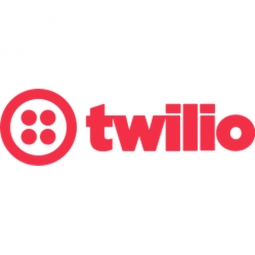Applicable Industries
- Finance & Insurance
- Telecommunications
Applicable Functions
- Sales & Marketing
Use Cases
- Speech Recognition
- Time Sensitive Networking
About The Customer
Callify's customers include major companies like Accenture, Allegis Group, Axis Bank, Bosch, Capgemini, HDFC Bank, Infosys, Kelly Services, NTT Data, and WNS among others. While Callify’s customers are predominantly in India, they have recently been gaining new ones in Australia, the Philippines, and Egypt, and are looking to expand into the United States. For those customers outside of India, Callify also leverages Twilio as their telecom provider to make the last mile phone call to qualified prospects. Internationally, Callify is making about 2,000 calls a day which is about 10% of the 20,000 they’re making overall, mainly in India.
The Challenge
The challenge faced by talent recruiters and other cold callers was that 80% of their call efforts were wasted on unanswered calls, rejections, or bad timing. This inefficiency was a significant drain on resources, with recruiters having to make twenty to thirty calls each day for each role, only to narrow it down to about five or ten prospects. The CEO of Callify, Chetan Indap, experienced this issue firsthand when he ran his own recruitment agency. He realized that automating calls could screen and filter out only the qualified candidates, saving recruiters both time and money.
The Solution
Chetan turned to Twilio for a solution to improve the efficiency of his recruitment agency. After implementing Twilio Programmable Voice, the wasted effort decreased from 80% to 20%, and efficiency increased by 30%. This solution was then expanded into a call qualifying product for other agencies, leading to the creation of Callify. Callify’s call qualifying solution allows a recruiter to pre-record a message that sounds like a real phone conversation to the candidate. The candidate can then record their response to a few questions from the pre-recorded message. This response helps recruiters filter and screen appropriate prospects so they only call back those that apply, qualify, or match necessary requirements. Callify also uses Twilio’s Programmable Messaging to deliver notifications that alert potential candidates of an opportunity, prior to the calls going out.
Operational Impact
Quantitative Benefit

Case Study missing?
Start adding your own!
Register with your work email and create a new case study profile for your business.
Related Case Studies.

Case Study
Real-time In-vehicle Monitoring
The telematic solution provides this vital premium-adjusting information. The solution also helps detect and deter vehicle or trailer theft – as soon as a theft occurs, monitoring personnel can alert the appropriate authorities, providing an exact location.“With more and more insurance companies and major fleet operators interested in monitoring driver behaviour on the grounds of road safety, efficient logistics and costs, the market for this type of device and associated e-business services is growing rapidly within Italy and the rest of Europe,” says Franco.“The insurance companies are especially interested in the pay-per-use and pay-as-you-drive applications while other organisations employ the technology for road user charging.”“One million vehicles in Italy currently carry such devices and forecasts indicate that the European market will increase tenfold by 2014.However, for our technology to work effectively, we needed a highly reliable wireless data network to carry the information between the vehicles and monitoring stations.”

Case Study
Vodafone Hosted On AWS
Vodafone found that traffic for the applications peak during the four-month period when the international cricket season is at its height in Australia. During the 2011/2012 cricket season, 700,000 consumers downloaded the Cricket Live Australia application. Vodafone needed to be able to meet customer demand, but didn’t want to invest in additional resources that would be underutilized during cricket’s off-season.

Case Study
SKT, Construction of Smart Office Environment
SK T-Tower is the headquarters of SK Telecom. Inside the building, different types of mobile devices, such as laptops, smartphones and tablets, are in use, and with the increase in WLAN traffic and the use of quality multimedia data, the volume of wireless data sees an explosive growth. Users want limitless Internet access in various places in addition to designated areas.






